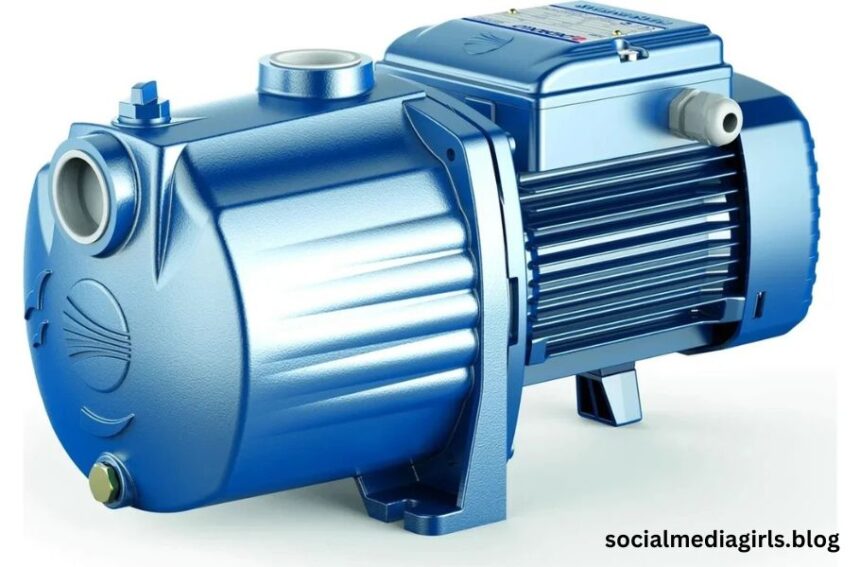Greasing pedrollo pump are reliable and efficient tools widely used in various industries, from residential water systems to agricultural irrigation. To keep these pumps running smoothly and ensure long-term performance, proper maintenance is crucial. One of the most important aspects of maintenance is greasing, which helps reduce friction, prevent wear, and enhance efficiency. Regular lubrication not only extends the lifespan of the pump but also reduces the risk of costly repairs. In this guide, we’ll explore the importance of greasing Pedrollo pumps and provide helpful tips for proper maintenance.
Understanding Greasing pedrollo pump
Pedrollo pumps are well-known for their reliability, efficiency, and durability in handling water across various applications. They are widely used in residential, agricultural, and industrial settings for tasks such as water supply, irrigation, and drainage. These pumps come in different models, including submersible, centrifugal, and multistage variants, each designed for specific needs. Regular maintenance, including proper greasing, ensures that the pump operates at peak efficiency and prevents premature wear. Understanding the type and function of your Pedrollo pump is essential for keeping it in top working condition.
Why Greasing is Essential for Pedrollo Pumps
Greasing is essential for Pedrollo pumps as it reduces friction between moving parts, preventing premature wear and tear. Proper lubrication helps dissipate heat, avoiding overheating that can lead to mechanical failures. It also enhances the pump’s efficiency by ensuring smooth operation, reducing energy consumption and maintenance costs. Without adequate greasing, components may degrade faster, leading to costly repairs or replacements. Regular lubrication extends the pump’s lifespan, ensuring reliable performance for years to come.
Types of Greasing pedrollo pump
Using the right grease is essential to maintaining performance. Consider these factors when choosing grease:
- Manufacturer-Recommended Grease: Always refer to the Pedrollo manual for specific grease types.
- Synthetic vs. Mineral-Based Grease: Synthetic grease typically lasts longer and performs better under extreme conditions.
- Water-Resistant Grease: Since pumps handle liquids, choose a grease that resists water contamination.
How Often Should You Grease Your Pedrollo Pump?
The frequency of greasing your Pedrollo pump depends on factors like usage, operating conditions, and manufacturer recommendations. In general, pumps used continuously or in harsh environments may require lubrication every few months, while occasional-use pumps may need greasing less frequently. Signs that your pump needs greasing include unusual noises, excessive vibrations, or overheating. Always follow the manufacturer’s guidelines to avoid over-greasing or under-greasing, both of which can impact performance. Regular maintenance checks will help determine the optimal greasing schedule for your specific pump model.
Tools and Materials Required for Greasing
To properly grease your Greasing pedrollo pump, you’ll need a few essential tools and materials. A high-quality grease gun is necessary for applying the right amount of lubricant without overloading the system. It’s also important to use the manufacturer-recommended grease to ensure compatibility and optimal performance. Additionally, have clean rags or wipes on hand to remove excess grease and dirt from fittings before application. Safety gear like gloves and goggles will help protect you from grease spills and contamination during maintenance.
Step-by-Step Guide to Greasing pedrollo pump
Step 1: Turn Off and Disconnect the Pump:Always ensure the pump is turned off and unplugged before maintenance.
Step 2: Locate the Grease Fittings:Find the designated grease points in the pump’s user manual.
Step 3: Clean the Fittings:Wipe off dirt and old grease to prevent contamination.
Step 4: Apply the Correct Amount of Grease:Use a grease gun to apply the recommended amount. Over-greasing can cause damage.
Step 5: Reassemble and Test:Once greased, reconnect the pump and test it to ensure smooth operation.
Common Greasing Mistakes to Avoid
When greasing your Pedrollo pump, avoid over-greasing, as excess lubricant can cause seal damage and lead to leaks. Under-greasing is equally problematic, as it increases friction and wear on moving parts. Using the wrong type of grease can reduce efficiency and potentially harm the pump’s internal components. Neglecting to clean grease fittings before application can introduce contaminants that may cause blockages or damage. Always follow the manufacturer’s recommendations to ensure proper lubrication and long-lasting pump performance.
Troubleshooting Greasing Issues
If your Pedrollo pump makes unusual noises after greasing, it could indicate that air pockets are trapped in the grease, or it may have been over-lubricated. Excess grease leakage could mean you applied too much, or the seals might be damaged. If the pump continues to overheat despite greasing, it might require a higher-quality grease or further inspection to ensure all components are lubricated correctly. Inconsistent pump performance may also point to using the wrong grease type for the operating conditions. Regular checks and proper greasing techniques can help prevent and resolve these issues.
Understanding the Different Types of Grease for Pedrollo Pumps
Choosing the right grease for your Greasing pedrollo pump is essential for ensuring optimal performance. The most commonly recommended greases for these pumps are lithium-based or calcium-based lubricants, as they provide excellent resistance to water and high temperatures. Always check the manufacturer’s manual for the specific type of grease that works best for your pump model. Using the wrong type of grease can lead to reduced efficiency and damage to the internal components. Regularly check the grease’s consistency to ensure it hasn’t become too thick or watery over time, which could affect lubrication quality.
The Impact of Environmental Conditions on Greasing Frequency
The environment in which your Pedrollo pump operates plays a significant role in determining how often it should be greased. Pumps operating in dusty, wet, or high-temperature environments may require more frequent lubrication to prevent buildup of dirt or rust. Similarly, pumps used in corrosive environments or exposed to chemicals will need regular maintenance to ensure the internal parts remain protected. Keeping an eye on these conditions can help you identify when extra greasing is necessary. Adapt your greasing schedule based on the pump’s operating environment to keep it running smoothly.
The Role of Seals in Greasing Pedrollo Pumps
Seals play a critical role in ensuring that the grease remains inside the pump’s internal components, preventing leaks and ensuring efficient lubrication. Regular greasing helps maintain the integrity of the seals, but over-greasing can cause them to fail prematurely. It’s important to inspect the seals during each maintenance check to make sure they aren’t cracked or worn out. Replacing damaged seals promptly will keep the grease inside and reduce the chances of grease leakage, which can affect the pump’s performance. A well-maintained seal ensures that your pump continues to run without any unnecessary interruptions.
Signs That Your Pedrollo Pump Needs Greasing
There are a few signs that indicate your Pedrollo pump may need greasing. If you notice that the pump is running noisier than usual or the motor is becoming unusually hot, it could mean the internal parts are lacking lubrication. Reduced water flow or increased energy consumption may also be signs that friction has built up due to insufficient grease. In some cases, you might notice vibrations or jerky movements, which can be alleviated by proper lubrication. Regular checks and keeping an eye out for these signs will help maintain the pump’s efficiency.
How Greasing Affects Pump Performance and Efficiency
Proper greasing plays a direct role in the performance and efficiency of your Pedrollo pump. Well-lubricated moving parts experience less friction, which reduces wear and tear and helps the pump maintain a smooth, steady operation. This results in better energy efficiency, as the motor doesn’t have to work harder to move water. Additionally, lubrication helps dissipate heat, preventing overheating that could lead to pump failure. Ensuring your pump is well-greased not only extends its lifespan but also keeps it working at peak performance, saving you time and money in the long run.
Conclusion
Regular greasing is essential for maintaining the efficiency and longevity of your Greasing pedrollo pump. By following proper greasing procedures and using the right materials, you can prevent common issues and ensure smooth operation. Consistent maintenance not only enhances performance but also reduces the need for costly repairs. Taking care of your pump today will pay off in the long run with reliable, trouble-free operation.






